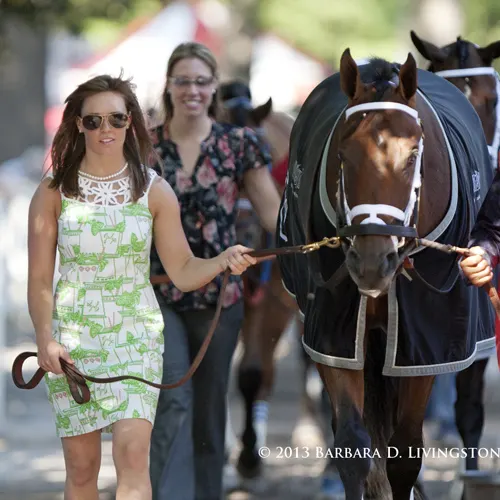Now to the exciting stuff! Since my last post, I’ve had several additional experiences to my time here in Sydney.
I’ve been fortunate to spend an afternoon or two helping assistant Mark Newnham saddle up at the races at the Rosehill Racecourse, where the Golden Slipper is held, the richest 2-year-old race in the world (which Gai won this year with the very impressive Vancouver!).
The layout at the racetracks are a little spread out here as far as the areas between the saddling stalls and the owners area, so it gives me plenty of time to pick his brain about a range of topics of how things work here in Australia from both a jockey’s point of view and a trainer’s point of view.
While at Randwick, I have been able to sit in and observe conversations, questionings and protests between jockeys and stewards. While jocks in America will most often talk on a phone from the winner’s circle to the stewards (this requires them to be able to defend their case on the spot and be able to explain well what exactly happened from their point of view, so it will be less versed), here down south they wait until all of the jocks come back and each defends their case while several screens are in front of them, so they have some time to have a planned defense and be able to more or less put on a debate. They will also bring in jocks to ask about a jockey’s overall input on the horse, which I haven’t seen or heard of done in America.
In the saddle, I’ve had another “cracking” experience as well, which is riding in barrier trials. Barrier trials would be equivalent to heats before the finals at a track meet, or the purpose of a show jump or dressage schooling show, but obviously in race form—a practice run with no purses involved.
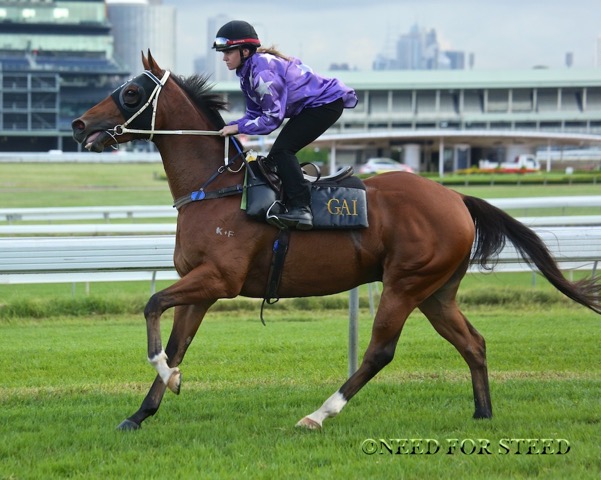
An eager Eisenhower warming up before a trial.
ADVERTISEMENT
They are used for a range of reasons and are open to all ages for horses. Two-year-olds will usually go through two, maybe three, to gain experience before they run in their first actual race while they will be used for older horses coming back from a spell (break from training) or horses that have a long period between each campaign, to see where they are both mentally and physically.
As each horse is different, some may need to trial more than others. The distances range from 1,200 meters (6 furlongs) to 740 meters (a little over 3 ½ furlongs). They are also used for apprentice jockeys as well, as you need to ride in 20 trials with approval from the stewards before you can start riding races.
To me, this very much helps “create” riders in a sense where they can develop to become safe riders, as there is no serious pressure for them to make any intense and rash decisions without the experience to make such decisions; to me it is the perfect step in between trackwork riding and race riding.
In America, you go from an exercise rider to a jockey—there is no in between and it is a drastic difference! In Puerto Rico, they offer practice races for the recent graduates outside of their renowned jockey school, as the Academy holds one every year at the Kentucky Horse Park as well. However to my knowledge Australia is the only place in the world where trials are offered, so this is a wonderful opportunity for me to get some serious learning in.
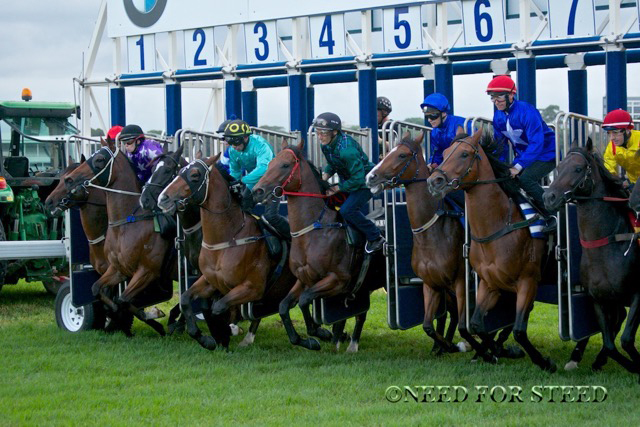
Breaking from the barriers at the Randwick trials. I’m in the No. 2 stall on Eisenhower.
I have to give my thanks once again to Gai and the team—with help between Gai, Mark and a number of the jocks and some of the crew back home I feel as I’m starting to get a foothold in the riding over here!
ADVERTISEMENT
As a competitive person and a perfectionist, I saw this as the perfect opportunity for me to gain experience with the only option of putting pressure on myself, which is enough of a problem! In any type of riding, mistakes are an everyday occurrence, but more so when you’re just starting out, and this is a perfect way to get some of the kinks out of the way.
Since I’ve been here my trial experience has been fantastic and—amazingly enough—a surprisingly relaxing time. A great example is of getting to the barriers (gates) in one of my first trials. I loaded up in the slot and looked over to Tommy Berry, who was not only had his feet out of the irons, but was completely sprawled along the gate and horse’s back like he was on the beach in Cancun.
“Had to load him first to make him stand. He’s quick to get worried so there’s no reason to sit on him,” he said and continued to watch the rest of us load until he finally sat on his horse. If that doesn’t scream “Australia,” I’m not sure what does. No worries, mate.
Aspiring jockey and former eventer Kali Francois grew up in Marinette, Wis. Not only is she a HB Pony Club Graduate, but was also involved in 4-H and AQHA, with multiple Grand Champion and Top Ten titles at the state and national level, including representing Wisconsin at the AQHYA Youth World Show. In 2010 she was a working student for Phillip Dutton before graduating from the North American Racing Academy in 2012. She spent the next couple of years working for Todd Pletcher at Saratoga, Belmont, and southern Florida.
This winter she moved to Australia to continue her next step in training to become a professional jockey in America. She is Down Unda to gain experience and opportunities working for world-renowned trainer Gai Waterhouse. She hopes to come back with plenty of experience to continue the possibility of being a safe, successful jockey. This is a new experience for an apprentice to travel overseas, so be ready for some surprises!
You can read all of Kali’s blogs here. You can also follow Kali on Twitter at @MissFrancois2u.
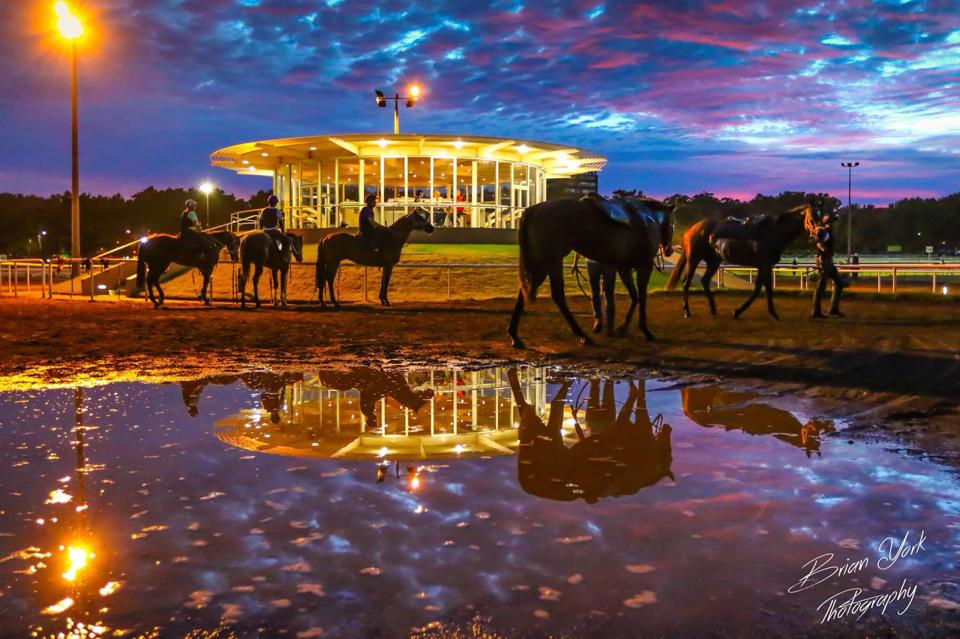
The Tower at Randwick
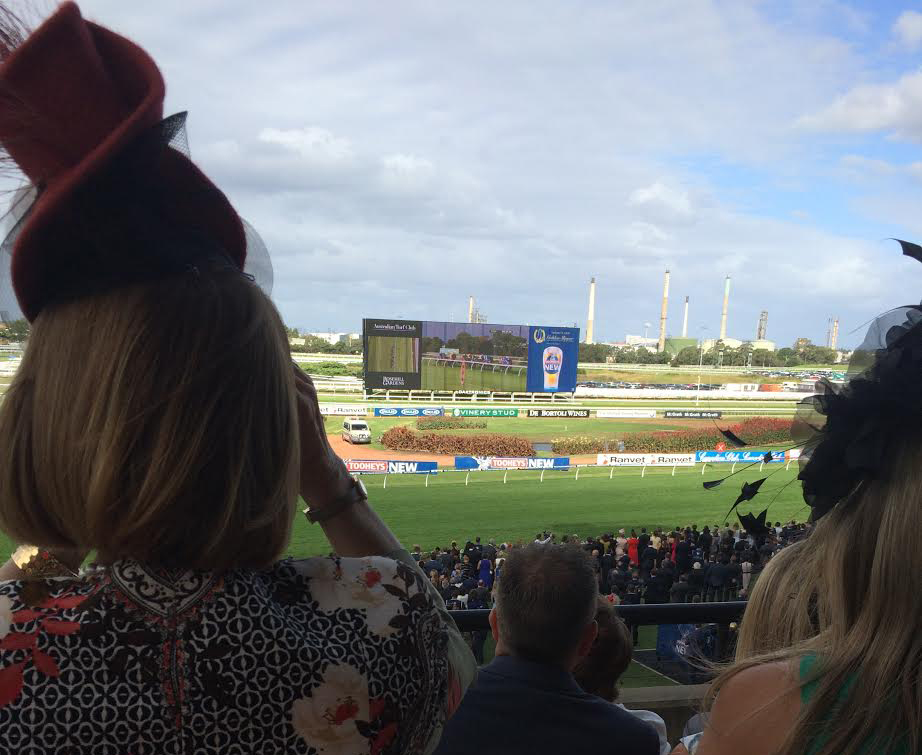
Getting to watch Gai’s relieved face after Vancouver won the Golden Slipper was a treat in itself! Well done Gai!

